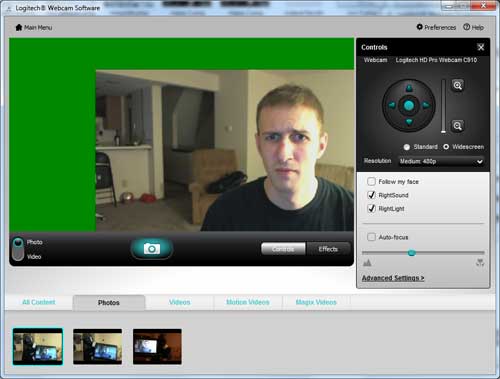Back Face Detection C Program
Posted By admin On 28/04/18Opencv - Open Source Computer Vision Library. Wondershare Mobilego For Android 4.2 there. You signed in with another tab or window. Reload to refresh your session.
Back Face Removal Back Face Removal A simple object space algorithm is Back-Face removal (or back face cull) where no faces on the back of the object are displayed. Since in general about half of the faces of objects are are back faces this algorithm will remove about half of the total polygons in the image. Look at a left handed viewing system If C >0 then N is in the direction of +z, and it faces away from the VRP, therefore, if C >0 then it is a back face (for a Left handed system). It is just the opposite condition for a right handed viewing system. Therefore, if C 0 then a back face and don't draw Note that we must be able to identify the polygons for the object.

This simple method is only correct for an orthographic projection. For a perspective projection, it is a little more complicated. For the scene below, the visible surfaces are different for orthographic or perspective projection. The sides will be invisible for an orthographic projection, but not for a perspective projection. For a perspective projection, we must determine if the Center of Projection (COP) is inside or outside of the planes of the polygons of the object. If the COP is inside then that plane is not visible, if the COP is outside then it is visible. There are two methods to compute this: • Put COP into plane equation and determine if inside or outside.

Reichert Microscope Serial Numbers. Note: must compute plane equation before the perspective transformation. • If the angle between the plane normal ( N) and the vector from any point on the plane to the COP, V is >90° ( NV.
Tahlil Dan Doa Selamat Pdf on this page. Contents • • • • • • • • • • • • • • • • • • • Techniques for face acquisition [ ] Traditional [ ] Some face recognition identify facial features by extracting landmarks, or features, from an image of the subject's face. For example, an algorithm may analyze the relative position, size, and/or shape of the eyes, nose, cheekbones, and jaw. These features are then used to search for other images with matching features.
Other algorithms a gallery of face images and then compress the face data, only saving the data in the image that is useful for face recognition. A probe image is then compared with the face data. One of the earliest successful systems is based on template matching techniques applied to a set of salient facial features, providing a sort of compressed face representation. Recognition algorithms can be divided into two main approaches, geometric, which looks at distinguishing features, or photometric, which is a statistical approach that distills an image into values and compares the values with templates to eliminate variances. Popular recognition algorithms include using,, using the Fisherface algorithm, the, the using representation, and the neuronal motivated. 3-dimensional recognition [ ] technique uses 3D sensors to capture information about the shape of a face.
This information is then used to identify distinctive features on the surface of a face, such as the contour of the eye sockets, nose, and chin. One advantage of 3D face recognition is that it is not affected by changes in lighting like other techniques.
It can also identify a face from a range of viewing angles, including a profile view. Three-dimensional data points from a face vastly improve the precision of face recognition. 3D research is enhanced by the development of sophisticated sensors that do a better job of capturing 3D face imagery. The sensors work by projecting structured light onto the face.